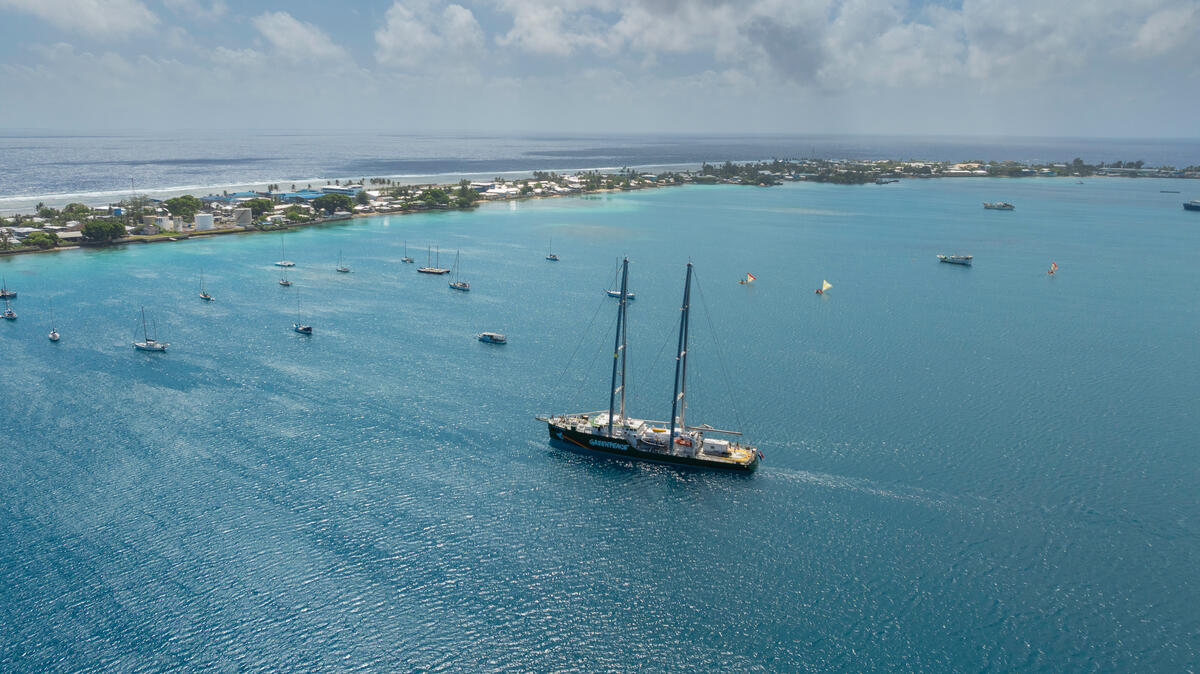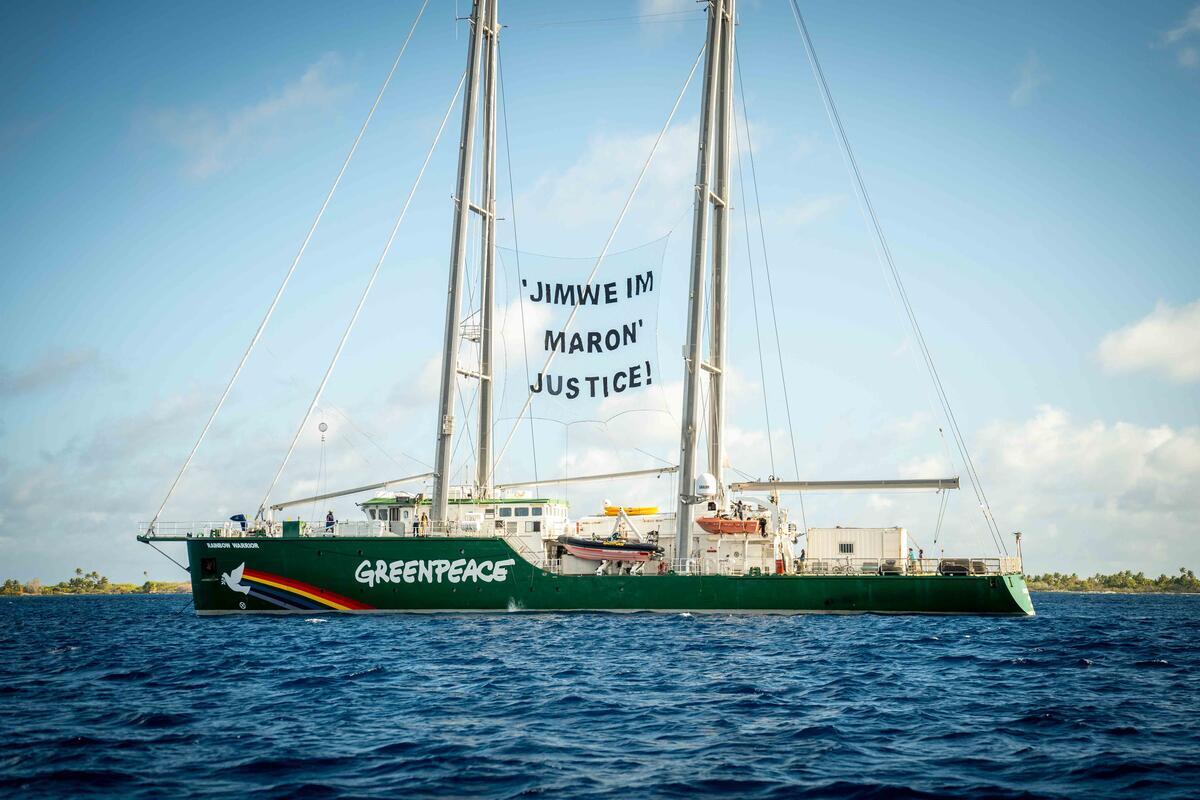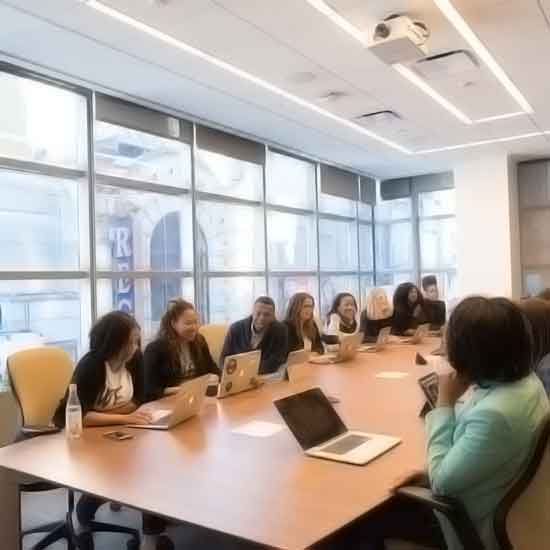We’ve visited ground zero. Not once, but three times. But for generations, before these locations were designated as such, they were the ancestral home to the people of the Marshall Islands.
As part of a team of Greenpeace scientists and specialists from the Radiation Protection Advisors team, we have embarked on a six-week tour on-board the Rainbow Warrior, sailing through one of the most disturbing chapters in human history: between 1946 and 1958, the United States detonated 67 nuclear bombs across the Marshall Islands — equivalent to 7,200 Hiroshima explosions.
During this period, testing nuclear weapons at the expense of wonderful ocean nations like the Marshall Islands was considered an acceptable practice, or as the US put it, “for the good of mankind”. Instead, the radioactive fallout left a deep and complex legacy—one that is both scientific and profoundly human, with communities displaced for generations.

Between March and April, we traveled on the Greenpeace flagship vessel, the Rainbow Warrior, throughout the Marshall Islands, including to three northern atolls that bear the most severe scars of Cold War nuclear weapons testing:
- Enewetak atoll, where, on Runit Island, stands a massive leaking concrete dome beneath which lies plutonium-contaminated waste, a result of from a partial “clean-up” of some of the islands after the nuclear tests
- Bikini atoll, a place so beautiful, yet rendered uninhabitable by some of the most powerful nuclear detonations ever conducted;
- And Rongelap atoll, where residents were exposed to radiation fallout and later convinced to return to contaminated land, part of what is now known as Project 4.1, a U.S. medical experiment to test humans’ exposure to radiation.
This isn’t fiction, nor distant past. It’s a chapter of history still alive through the environment, the health of communities, and the data we’re collecting today. Each location we visit, each sample we take, adds to a clearer picture of some of the long-term impacts of nuclear testing—and highlights the importance of continuing to document, investigate, and attempt to understand and share these findings.
These are our field notes from a journey through places that hold important lessons for science, justice, and global accountability.
Our mission: why are we here?

With the permission and support of the Marshallese government, a group of Greenpeace science and radiation experts, together with independent scientists, are in the island nation to assess, investigate, and document the long-term environmental and radiological consequences of nuclear weapons testing in the Marshall Islands.
Our mission is grounded in science. We’re conducting field sampling and radiological surveys to gather data on what radioactivity remains in the environment – isotopes such as caesium-137, strontium-90 and plutonium-239/240. These substances are released during nuclear explosions and can linger in the environment for decades posing serious health risks, such as increased risk of cancers in organs and bones. But this work is not only about radiation measurements, it is also about bearing witness.
We are here in solidarity with Marshallese communities who continue to live with the consequences of decisions made decades ago, without their consent and far from the public eye.
Lorem ipsum dolor sit amet,consectetuer adipiscing elit. Aenean commodo ligula eget dolor. Aenean massa. cu sociis natoque penatibus et magnis dis parturient montes,nascetur ridiculus mus. Donec quam felis,ultricies ne,pellentesque eu,pretium quis,sem. Nulla consequat massa quis enim. Donec pede justo,fringilla vel,aliquet n,vu eget,arcu. In enim justo,rhoncus ut,imperdiet a,venenatis vitae,justo. Nullam dictum felis eu pede mollis pretium. Integer tincidunt. Cras dapibus. Vivamus elementum semper nisi. Aenean vulputate eleifend tellus. Aen li,porttitor eu,consequat vitae,eleifend ac,enim.
Proin gravida nibh vel velit auctor aliquet. Aenean sollicitudin,lorem quis bibendum auctor,nisi elit consequat ipsum. gravida nibh vel velit auctor aliquet. Aenean sollicitudin,lorem quis bibendum auctor,Proin gravida nibh vel velit nisi elit consequat ipsum.Proin gravida nibh vel velit auctor aliquet. Aenean sollicitudin,lorem quis bibendum auctor,nisi elit consequat ipsum. Proin gravida nibh vel velit.
Proin gravida nibh vel velit auctor aliquet. Aenean sollicitudin,lorem quis bibendum auctor,nisi elit consequat ipsum. Proin gravida nibh vel velit auctor aliquet. Aenean sollicitudin,lorem quis bibendum auctor,Proin gravida nibh vel velit nisi elit.
- Albedin Simanth
Lorem ipsum dolor sit amet,consectetuer adipiscing elit. Aenean commodo ligula eget dolor. Aenean massa. cu sociis natoque penatibus et magnis dis parturient montes,nascetur ridiculus mus. Donec quam felis,ultricies ne,pellentesque eu,pretium quis,sem. Nulla consequat massa quis enim. Donec pede justo,fringilla vel,aliquet n,vu eget,arcu. In enim justo,rhoncus ut,imperdiet a,venenatis vitae,justo. Nullam dictum felis eu pede mollis pretium. Integer tincidunt. Cras dapibus. Vivamus elementum semper nisi. Aenean vulputate eleifend tellus. Aen li,porttitor eu,consequat vitae,eleifend ac,enim.
It is a long established fact that a reader will be distracted by the readable content of a page when looking at its layout. The point of using Lorem Ipsum is that it has a more-or-less normal distribution of letters,as opposed to using 'Content here, content here',making it look like readable English.









Medison Decros
On September 18,2020 at 4.30 pmLorem ipsum dolor sit amet,consectetuer adipiscing elit. Aenean commodo ligula eget dolor. Aenean massa. cu sociis natoque penatibus et magnis dis parturient montes,nascetur ridicule us mus. Donec quam felis,ultricies ne,pellentesque.
ReplyJekson Albin
On September 18,2020 at 4.30 pmLorem ipsum dolor sit amet,consectetuer adipiscing elit. Aenean commodo ligula eget dolor. Aenean massa. cu sociis natoque penatibus et magnis dis parturient montes,nascetur ridicule us mus. Donec quam felis,ultricies ne,pellentesque.
ReplyBentham Debid
On September 18,2020 at 4.30 pmLorem ipsum dolor sit amet,consectetuer adipiscing elit. Aenean commodo ligula eget dolor. Aenean massa. cu sociis natoque penatibus et magnis dis parturient montes,nascetur ridicule us mus. Donec quam felis,ultricies ne,pellentesque.
Reply